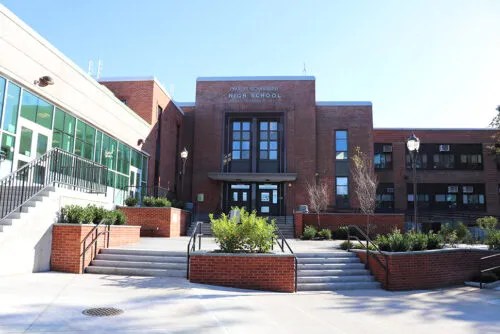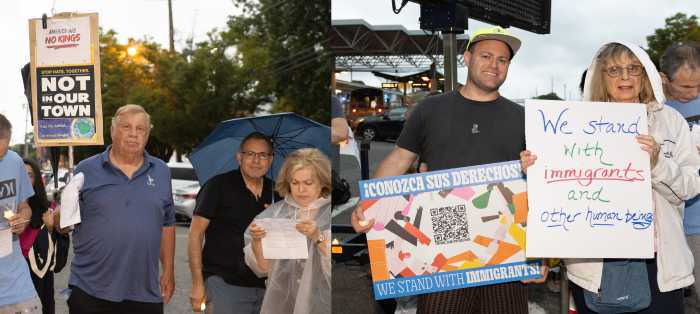
On April 10, the Village of Munsey Park heard from ExteNet Systems—a provider of converged communication infrastructure and services for advanced network connectivity, and the same company that will be speaking before the Flower Hill Board of Trustees on May 6—regarding the proposed placement of a small cell AKA cell node on the island on the corner of Park Avenue and Manhasset Woods Road, property that is in Munsey Park, but is just a house or two away from the Village of Flower Hill.
“Munsey Park is having a hearing on the small cell installation, but they have negotiated with the carrier to rather than put the equipment on utility poles, they’re erecting a 50-foot flag pole on the traffic island on the corner of Park Avenue and Manhasset Woods Road, which is basically one house away from our village,” said Flower Hill Village Administrator Ronnie Shatzkamer at the April 1 board of trustees meeting. “I’m very concerned that our residents who live in that immediate area do not know about this. Munsey Park notified us, but we have no recourse to approve or disapprove.”
During the presentation on April 10 to the Munsey Park Board of Trustees, Richard Lambert of ExteNet Systems explained that the company is requesting a conditional use permit be issued for the construction of a small wireless telecommunications facility within the Village of Munsey Park right-of-way. The Distributed Antenna System (DAS) Node would be constructed on a replacement flag pole designed to contain small cell wireless communications equipment. Fiber is not part of the application. The now standing 36-foot flag pole would be replaced with a 50-foot stealth flag pole with an antenna embedded atop the pole and a radio at the base of the pole.

Lambert furthered that the one Munsey Park small cell would be one of a 66 node network, interacting with macro sites (like cell towers) and micro sites (like cell nodes) in surrounding areas, like Kings Point, Flower Hill and Lake Success.
“Each of the small cells, when it propagates, it just barely touches the next one over,” said ExteNet Senior Design Engineer Chris Friedrich. “If you take away the flag pole location, there would be a big gaping hole between the Flower Hill nodes and where the end of the polygon comes down.”
Dr. Kenneth R. Foster, whose research expertise include biomedical applications, electro-magnetics and safety, spoke on the radio frequency (RF) exposures that the nodes would emit.
“The maximum exposure at any place of public access from this site would be less than 1 percent of the FCC limits,” said Foster. “I will state unequivocally that this is not a significant source of exposure. Exposures below international limits have no identified hazard and that’s certainly the case here. The biggest exposure people have is a cell phone, sticking the cell phone right against the head and then the next highest is typically when someone in the same room uses a cell phone.”
Flower Hill Trustee Kate Hirsch attended the meeting and asked questions during public comment.
“Why, if there are 66 nodes throughout multiple villages, why is it so piecemeal when we’re all trying to figure out what is going on? If we could all just work together, it would work a lot better,” said Hirsch. “With regard to the node in Munsey Park, is that going to be the same radio frequency as the nodes in Flower Hill?”
Representatives of ExteNet responded “yes.”
The Manhasset-Lakeville Water District denied ExteNet’s request to lease the property for the cell nodes, which does not require a formal application, ExteNet told Hirsch regarding her next question.
The company will present before the Flower Hill board on May 6 regarding 18 proposed cell nodes.

































